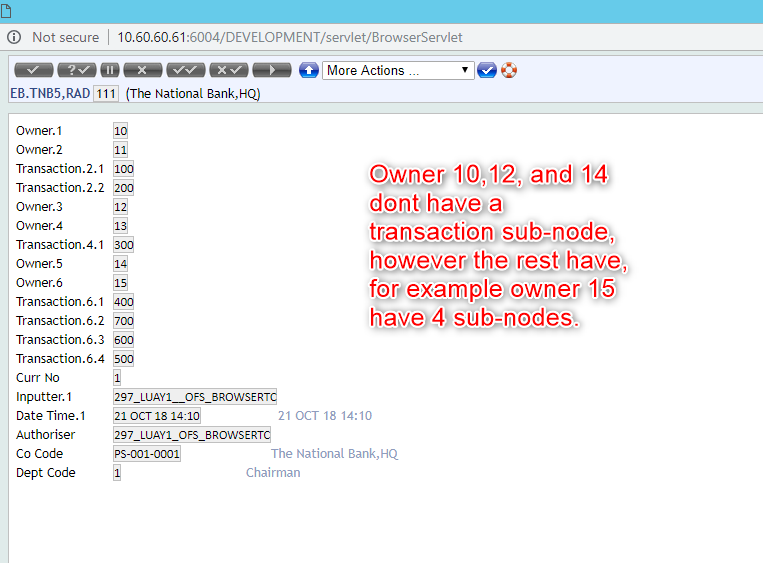our application stores all data as xml in oracle database, for example i have the below data as appear in the browser:

in database the record appear like this:
<row id="111">
<c1>10</c1>
<c1 m="2">11</c1>
<c1 m="3">12</c1>
<c1 m="4">13</c1>
<c1 m="5">14</c1>
<c1 m="6">15</c1>
<c2/>
<c2 m="2">100</c2>
<c2 m="2" s="2">200</c2>
<c2 m="4">300</c2>
<c2 m="6">400</c2>
<c2 m="6" s="2">700</c2>
<c2 m="6" s="3">600</c2>
<c2 m="6" s="4">500</c2>
<c3 m="6"/>
<c4 m="6"/>
<c5 m="6"/>
<c11>1</c11>
<c12>297_LUAY1__OFS_BROWSERTC</c12>
<c13>1810211410</c13>
<c14>297_LUAY1_OFS_BROWSERTC</c14>
<c15>PS0010001</c15>
<c16>1</c16>
</row>
as u see above c1 holds the owner data, c2 holds the transactions data... and so on..
in the above example the first "c2" node appear like <c2/> becuase it has no transactions in it. however if it has it will appear like this <c2>"some transaction number"</c2>
now from database i want to extract this data as below:
| Owner | Transaction |
| 10 | |
| 11 | 100 |
| 11 | 200 |
| 12 | |
| 13 | 300 |
| 14 | |
| 15 | 400 |
| 15 | 700 |
| 15 | 600 |
| 15 | 500 |
any help plz....
BR